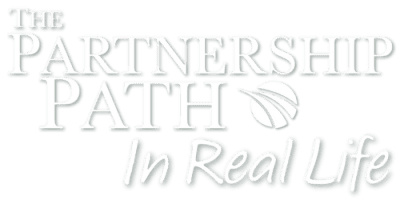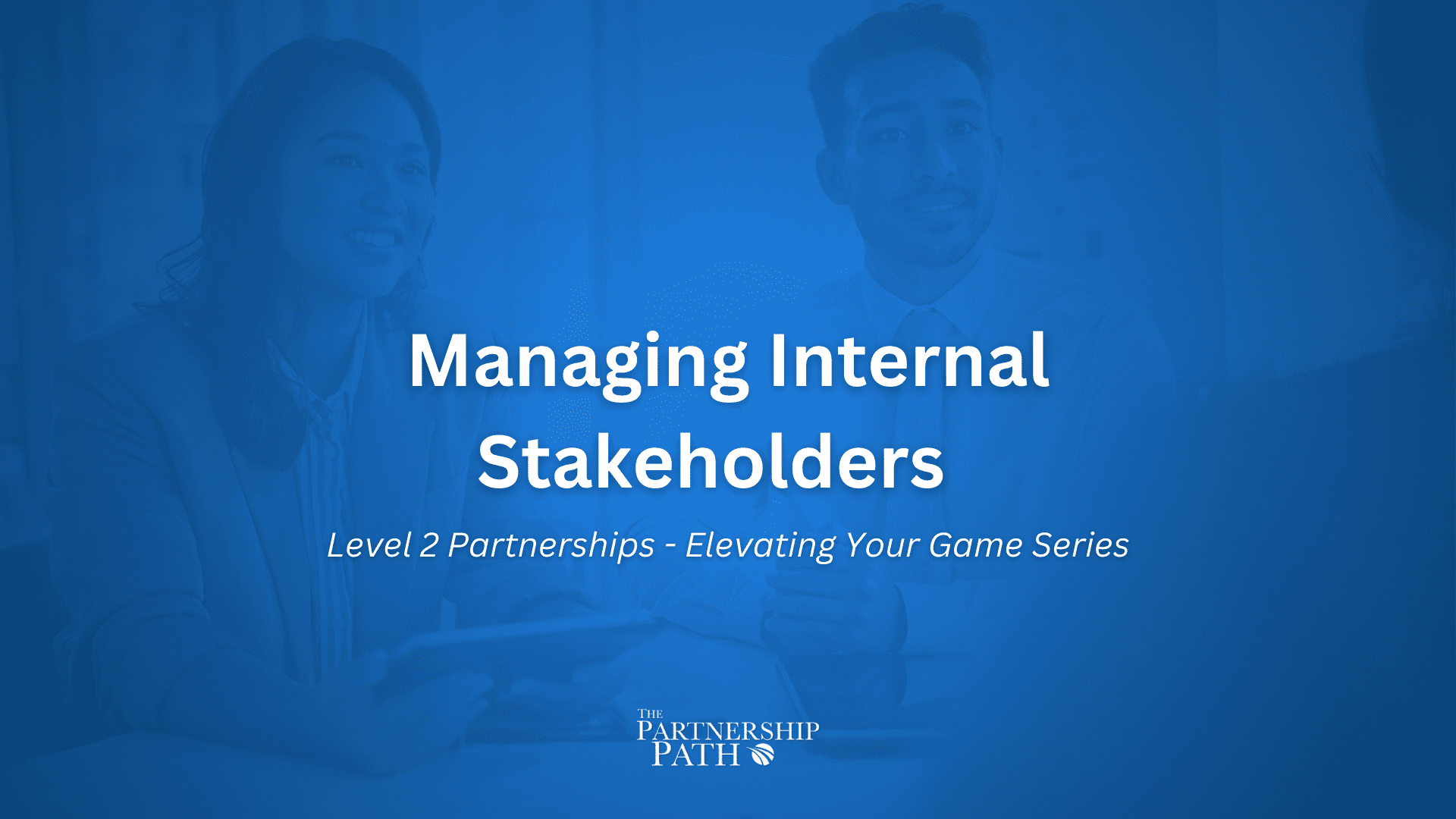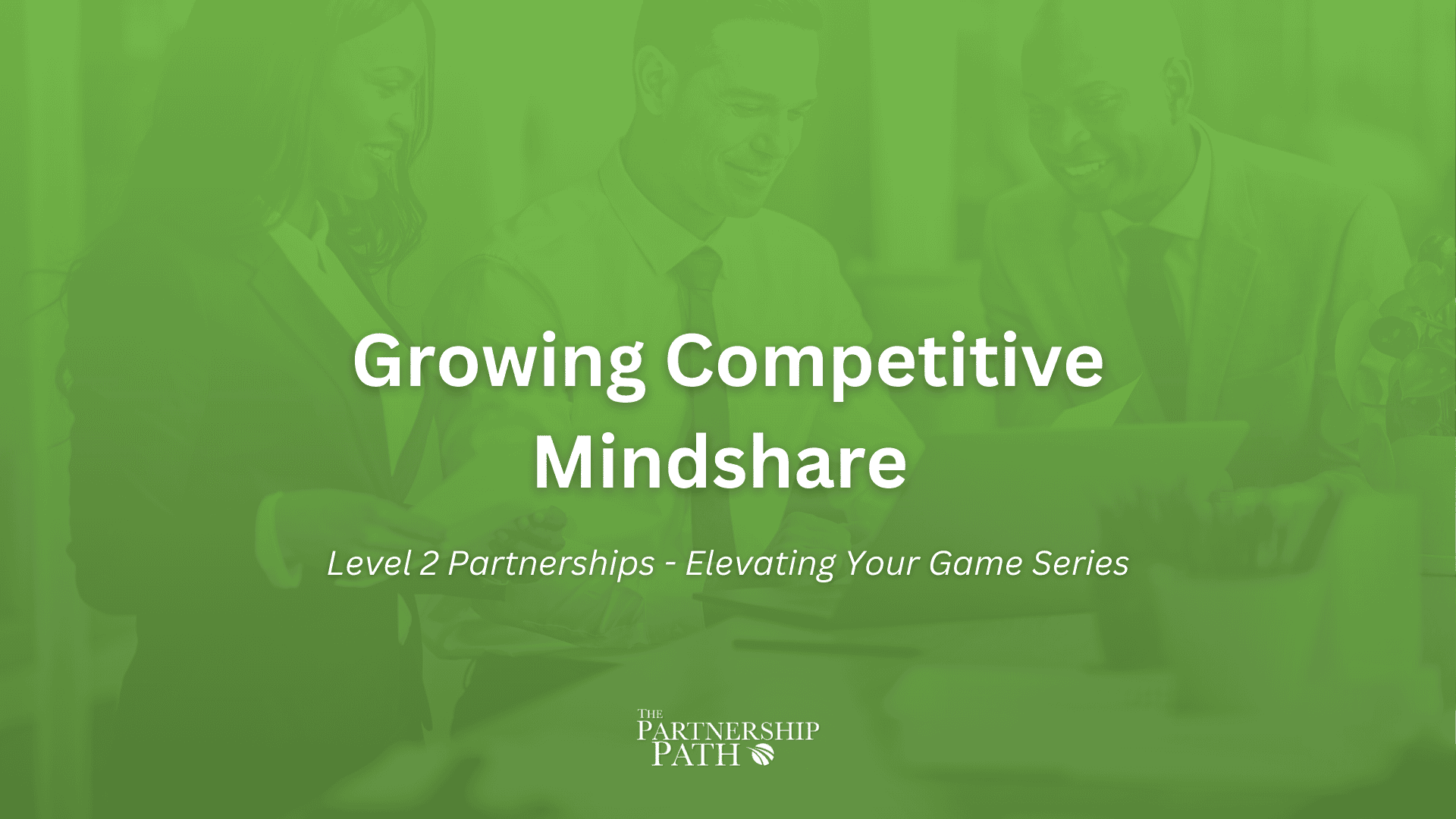Oana Terteleac at Microsoft On Preparing And Motivating Sales Teams
Episode Summary
In this episode of Partnership Path in Real Life, host John Rudow interviews Oana Terteleac, a seasoned professional with 17 years at Microsoft and extensive experience in partner management. The discussion revolves around preparing and motivating sales teams, both internally and through partners. Oana shares her insights on understanding partner motivations, building trust, and creating successful collaborative environments. They discuss the importance of aligning partner and vendor goals, crafting intentional partnerships, and offering practical strategies for partner managers to drive success.
Transcript
John (00:01)
Oana, welcome to the Partnership Path in Real Life. I’m so excited to have you on this broadcast. Thank you for being willing to join us today. So welcome, glad you’re here.
Oana (00:13)
Thank you so much, John. It’s an honor to be here with you finally. And actually quite excited for the topic of the podcast that we’re covering today. I think it’s going to be super interesting and addressing some of the meat challenges and going with the meat butters in the industry.
John (00:29)
Yeah. Awesome. Well, let’s, before we get into that, let me give you an opportunity to introduce yourself to our listeners. So tell us a little bit about what you do now and how long you’ve been working with partners.
Oana (00:43)
So I’m not going to disclose the company I’m working for because anyone can look it on LinkedIn. So I should be fine on that one. I’ve been working for Microsoft for the last 17 years in my professional career. And for the last seven years, I would say I’ve been working for partners, through partners and addressing customers through our partner ecosystem.
John (01:05)
Okay. Is there a particular kind of partner that you’re working with now, any particular industry or anything like that, or is it just any partner that you get assigned?
Oana (01:13)
I would say so historically I’ve been working with both solution partners that are crossing the horizontal workloads, but I have also been working with industry partners that are addressing specific industry motions. So I had the chance to cross the broad occasions of engagement and broad models because there’s no partner like the other and every interaction is very, very, very specific.
John (01:39)
Yeah, I’m so, I’m really glad you just said that, right? I think that’s so critical for people to continue to remind themselves, right? No partner is like any other, no matter how similar they are, they’ve all got their own unique quirks and stuff that they need. So it means that every one of our interactions has to be kind of specialized for that partner to some degree. So I love that. All right, well, we’re here to talk about preparing and motivating sales teams, both.
on the partners that we manage and internally with the organizations that we work for. So you listened to Tony and I talk a little bit about that in this last episode. Let’s just start with, you know, what resonated for you in that episode? You know, what was your reaction to it? What, you know, what really stood out for you?
Oana (02:27)
Well, what stood out for me was the value proposition. It had been like every partner channel manager has the cellar of the DNA of a cellar, one way or the other. We have all interacted with customers. We have tried to put the customer in the center of our decision -making process and always the solutions that we convey to the customers have been putting the needs of the customer in the core of our offering. When we switch to the partner vision,
We are trying to do the same, but put the partner in the center of the vision that we want to learn to market. Right. So the value proposition that we want to learn with the sellers of the partner need to take into consideration multiple aspects. One thing that stood out for me is understanding the compensation model for the sellers. Right. Because in the end, we need to create the common denominator. How do we translate what the partnered sellers are compensated by, what our sellers are compensated by?
John (03:13)
Yeah.
Oana (03:23)
what is the common denominator and how do we create the common ground to make sure that the co -sell process and the co -selling with partners becomes effective and efficient in lending in the market. The second point that I would like to bring up is, well, after understanding the compensation, we need to understand what the sellers are motivated by because making money is part of what drives in the sales ecosystem. But there are many other things that are very like growing some soft skills.
John (03:35)
Yeah.
Yeah.
Oana (03:53)
shadowing more senior leaders in the industry whom they can learn from, creating new connections and business relationships that will help them grow in their professional careers in the future and becoming rock stars. Like there is no seller I have met on the planet who doesn’t aspire one way or the other to differentiate themselves out from the pack and become a rock star. So this is the value that they’re selling. We’re not selling only the money making because…
John (04:18)
Yeah. Yep.
Oana (04:20)
Any other vendor can sell the money making. We are selling what we can make out of them as professionals in the long run. Tony said something very interesting. You cannot promise you’re going to be in the partnership for six months, for two years, but you can tell them how are you going to help them decrement their quota and achieve performance and become rock stars. And for this, you need to have a plan. The solution that we want our partners to sell to the market, it’s not necessarily the
John (04:32)
That’s right.
Yeah. Yeah.
Oana (04:48)
core of the value proposition. But it’s how we make them feel comfortable about that solution, how it integrates naturally and very smoothly into what they want to convey to the market. And in the end, how can we make sure that the end result, the end product, which is the customer satisfaction, comes as a feedback, circles back as a feedback to both our organization and reconfirm we are on the right track. Because when you’re going back to the tactical alignment, we want to get and recheck.
John (04:58)
Yeah.
Oana (05:18)
With every milestones, our progression is trending into the right direction. Otherwise, we need to take the corrective measures. So motivating the sellers and making sure they’re executing and achieving the milestones basically is pivotal in declaring success of the tactical alignment. And if I were to go even broader, of course, sales managers are not always going to let you.
John (05:25)
Right.
Yeah.
Oana (05:42)
mingle in their seller team, do whatever you want. You need to be very much aligned, sell the value, but at the same time, there are a couple of things you can do. And I think any channel partner manager has that at its core. First of all, building trust. In order to build trust, you need to show integrity and you don’t have much time to do that. Showing integrity means doing whatever you say, when you say serving the people you say you will serve. Then you need to build trust by
John (05:45)
Right.
Oana (06:12)
not over promising, be very sure, be very aware where the boundaries are. Never make promises you cannot deliver just to give some expectations and then not being able to deliver. So be very mindful on that one. And also create the boundaries. You don’t want to be the crying shoulder of the sellers, of the partners.
John (06:31)
Yep. So let me, I want to ask you something. You mentioned something really interesting to me when you talked about this concept of that the sales reps aren’t just motivated by money. Totally agree with that, right? They have a lot of different motivations. And you talked about, you know, being rock stars or, you know, getting to interact with executives in different ways or different companies at different levels and all of that.
How do you uncover that? How do you figure out when you have a particular partner, how do you figure out what their motivations are? Like what are some of the tricks that you use to get to that?
Oana (07:15)
First of all, with the key sellers, I try to identify which are the key sellers because, you know, usually just as it happens in life, 20 % of the resources deliver 80 % of the impact. And probably you want to know which pool are those 20 % and this is probably where you will want to invest the effort because then they are the leaders in their own teams and the others will follow.
John (07:40)
Yeah. Yeah.
Oana (07:41)
So once you create the rock stars, the others will follow naturally and you’ll get more and more traction. So with this very few, what I’m usually doing is not a recipe or a secret sauce or anything, but I’m usually doing, I’m setting up some couple of one -to -ones. I try to understand not only what motivates them, but how are they operationalizing their business model? Like how they are translating in the end our partnership goals, their sales goals into what they do on their day -to -day activities.
And then sometimes I discover something that if you are a good listener, at some point they will ask you, what do you think? And then it’s a moment when if you are not necessarily working as a coach, you know, you don’t have to be a business coach for that, but leveraging the business acumen that each of the partner channel sellers has.
John (08:31)
Right?
Oana (08:37)
leveraging that business acumen and conveying a couple of principles, you can resonate with them and give some remarks that are very down to earth and common sense. They might say, hey, I never thought from that perspective. And then it’s a good opportunity. And this is where I’m winning and making them my friends. And I’m asking them, and what is your feedback that you would like to convey to my company? Because then I can take that feedback and bring it back to our teams.
John (08:52)
Yeah.
Yeah.
Yeah.
Oana (09:07)
And if I want to double click on the trust, I know that it can be, it has to be more than words. And then what I can bring to the table, I can bring outbound opportunities from my own sales teams that I can show as business opportunities. And also I can work with them and construct those GTM kind of activities, like account -based marketing activities, seller road shows, these kinds of engagements that.
places them in partnership with the vendor I represent in front of the customer to show a strong handshake, not only on the technology side, but also on the execution side. So they don’t feel alone in the execution process. And point number three, from time to time, I take the shovel and I go in the trenches. And I think this is something that really creates an additional layer of trust because people see you, how you can help them strategize on the execution of a deal.
John (09:51)
Yeah.
Yeah.
Oana (10:07)
how you are not afraid to go into the complexities of the peak deals and maybe provide some guidance or advice, or even sometimes co -present together with them in front of the end customer.
John (10:12)
Yeah.
Yeah. You know what? Why don’t we’ve had, I’m sitting here a little bit in awe because we’ve had a lot of people come in on these in real life episodes and you have just gotten to a layer of super tactical, practical things to do that I think are super helpful. Like that’s so critical. Like the fact that you just.
called it out. Like, I figure out who the top sellers are. I go, I meet with them one -on -one and then I listen. Like, even though that sounds really, really simple, like that’s the kind of stuff I think our listeners want to hear. Like, you know, that there’s not a big mystery here. It’s not some fancy PowerPoint that you put together. It’s not some really complicated process. It’s really the simple interaction of human to human, understanding what makes you tick and how can I help make that better?
Like I love that.
Oana (11:15)
You know how they say, you don’t have to do extraordinary things to achieve extraordinary results.
John (11:21)
Yep, that is exactly right. Well, all right, I want to ask one other thing. We’ve talked a little bit about kind of motivating and you hinted at some of the preparation stuff of, you know, how do we make sure the partner sellers and our sellers are educated, you know, understand that customer value proposition of the two together. Do you have any advice on that? Any tricks on that of?
you know, ways you put stuff together or how you present it to either side to make sure that everyone is comfortable going to market with that partner.
Oana (11:58)
For sure, some partners may be more difficult than others. And I keep reminding myself what Tony mentioned with making the work with that partner become easy. So people on our side, on the vendor side, feel also comfortable to engage with the sellers from the partner, respect them, and at the same time, have a deeper understanding of what the partnership can be delivering for them. And what I usually do, I…
John (12:09)
Yeah.
Oana (12:27)
Apart from the regular presentations and structures and materials that every organization probably has already in place for their channel ecosystem. I like to take a deal that has a strong name in the industry and I do the deal anatomy. I try to explain people what did we do together in order to jointly mark the deal as a win. And then basically placing the names of the people who have contributed to the success.
showcasing that the success was not an accident, but it was the result of an intentional form of collaboration. And I think this is very important to mark the words intentional and collaboration, because otherwise accidents would be translating into, let’s say, opportunistic engagements in a partnership you want to have for those partnerships you want to grow.
you cannot be satisfied with opportunistic engagements. You need to have a strong governance in place and to try with programmatic engagements. And this is why showcasing the deal anatomy and transforming it into a process that is easy to follow afterwards and can be scaled at the, let’s say, at least for a portion of the most relevant deals in the pipeline, that can be transformed into a programmatic motion.
John (13:38)
Yeah.
Oana (13:50)
that afterwards can be shifted to milestones in the execution and monitored for progress.
John (13:58)
Yeah, so you’re almost, it’s almost like you’re writing down the recipe or creating the formula that says, hey, look, here’s what’s worked in the past. And these are kind of the best practice steps that these people follow to reach a successful conclusion. So it’s a good model to follow. You know, what you just described is,
kind of scarily a lot of like what I do for a living in terms of building training, right? Is to try and figure out that formula. I don’t know about that. I don’t know about that. My success is based on talking to people like you and listening to those formulas and what works and what doesn’t work and then trying to find that common theme that I can leverage across lots of different people. So I love that. All right, one last thing, Wanda, before you go, we have a fair number of people in our community that are very,
Oana (14:27)
You’re just much better than me, that’s all.
John (14:51)
new to partner management, haven’t maybe done a lot of it. And so if you think about this topic, motivating and preparing sellers, to someone who’s never done it before, who’s a little bit intimidated by it, what’s your kind of one piece of advice to them on how to get started down the right path?
Oana (15:14)
the mindset and the attitude you come to the table will be not the attitude, will create the altitude, which means that if you come to the table with a mindset that is prepared, hey, I genuinely want to make this partnership work. I genuinely want to make my seller successful and I genuinely want to make their seller successful. I’m committed to bring
John (15:22)
Yeah. Yep.
Oana (15:43)
my A game here. Guys, tell me what you need. This is what I’m envisioning, but I’m very open to getting your feedback. Guys on my team, please tell me what you need from the partner and what could help you accelerate. And then I just, you know, putting the feet in the cold water, thinking what is realistic to achieve because both of the sides can come up with vision impossible number five. And then creating the structure, the skeleton of something that is like,
a small pilot. I would not start big, especially if I’m at the beginning. I would start with a pilot. I would choose a couple of friendly people on both sides. And I would try to learn from these engagements. And because of the variety, I would not take, let’s say, very similar professionals on both sides, just because I want to have enough diversity to extract relevant conclusions that can be scaled. Otherwise, if I’m taking customers,
John (16:38)
Yeah.
Oana (16:41)
three customers from FSI, which are the top three banks in UK, and I’m bringing the top three accountants in UK from the partner and top three accounts in UK from the vendor, I probably will get the same kind of infrastructure issues, database, performance, challenges, ideas for projects that can be very similar. And the outcome is that I may develop a best practice for FSI that may not be relevant enough for manufacturing.
John (16:57)
Right, right.
Oana (17:11)
So it very much depends where your partner is playing, where the sales are playing. But if you’re a PDM at the beginning of the journey, try to understand both perspectives. Be very good in understanding the technology you’re trying to put in the center of the joints offering that the partnership will offer to the customer. And start with the relevant pilot.
John (17:32)
and come in at the very beginning with the right attitude. It’s all about attitude. I love that. Thank you so much for coming on this episode. I really appreciate it. I loved everything that you told us today. I’m sure the community is taking various notes to make sure that they can follow your advice. And so thank you so much for being here. And let’s see if we can get you back on another episode sometime soon.
Oana (17:43)
Thank you.
Sure, it’s absolutely my pleasure.
John (18:00)
Alright, thanks a lot. Bye.
Oana (18:02)
Thank you so much, John. Bye bye.
Key Takeaways
- Understanding Motivations and Compensation Models: Oana emphasizes the importance of understanding what drives sales teams, beyond financial compensation, to foster deeper engagement and long-term partnerships.
- Building Trust and Collaboration: Establishing trust through integrity, consistent communication, and collaborative efforts is key to successful partnerships. Partners must feel supported, especially during deal execution.
- Start Small with Pilot Projects: For new partner managers, Oana suggests starting with small, diverse pilot projects to test strategies and build scalable processes before taking on larger, more complex initiatives.



